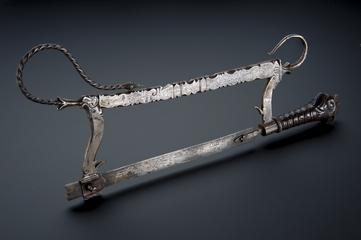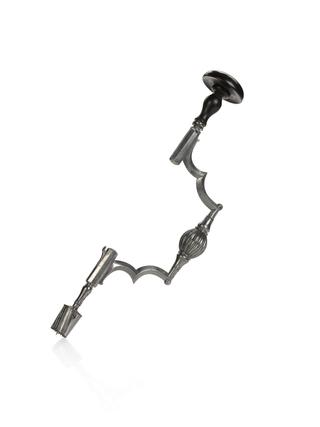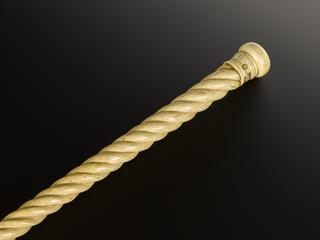
















Ornate bow-frame amputation saw, damascened in gold, ebony handle, c.1650, from the Hamonic collection
Your patient has a rotting wound after being shot in the arm. Will you amputate? Your instruments are this saw and a handful of knives. The saw is big – as long as your arm – and heavy. Sometimes the blade can snag on the bone, and if your patient moves suddenly during the operation, the blade can break.
But in the 1600s amputation may have been the patient’s only chance of recovery. If the wound had the black tinge of gangrene, death was likely to follow. So what could you do to improve your patient’s chances? As a surgeon, your best skill was speed. This depended on your excellent knowledge of anatomy, your expert surgical techniques and the finest instruments.
The ornate gold decoration and ebony handle of this saw would have impressed your patients – a kind of status symbol. But the handle was not comfortable to use, and could slow down the speed of the operation. Moreover, the lavish decoration harboured germs, risking further infection.
By the late 1800s amputation saws were smaller, stronger and lighter. They were plain in design and made of one or two metal pieces, which could be sterilised easily. Anaesthetics were introduced, and surgeons had longer to perform more complicated operations. But in the 1600s there was not much you could have offered your patient, other than a drop of alcohol perhaps. You’ll have to numb the arm by tying a bandage very tightly above the wound, strap your patient to the chair, and then go for it – are you brave enough?
Details
- Category:
- Surgery
- Collection:
- Sir Henry Wellcome's Museum Collection
- Object Number:
- A121436
- Materials:
- blade, steel, frame, steel, frame, gold and handle, ebony
- Measurements:
-
overall: 33 mm x 400 mm x 145 mm, .49 kg
- type:
- amputation saw
- credit:
- Hamonic Collection




